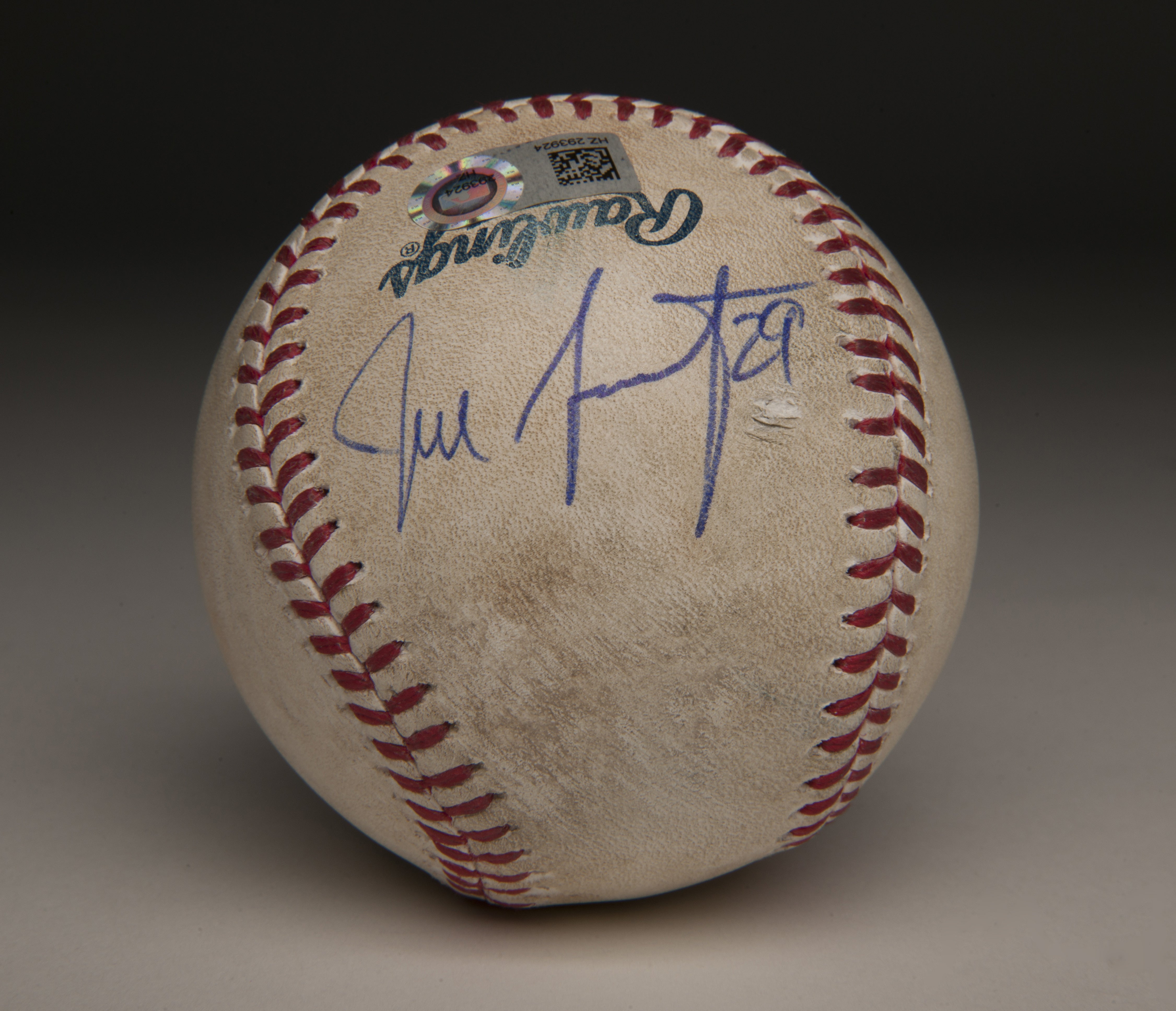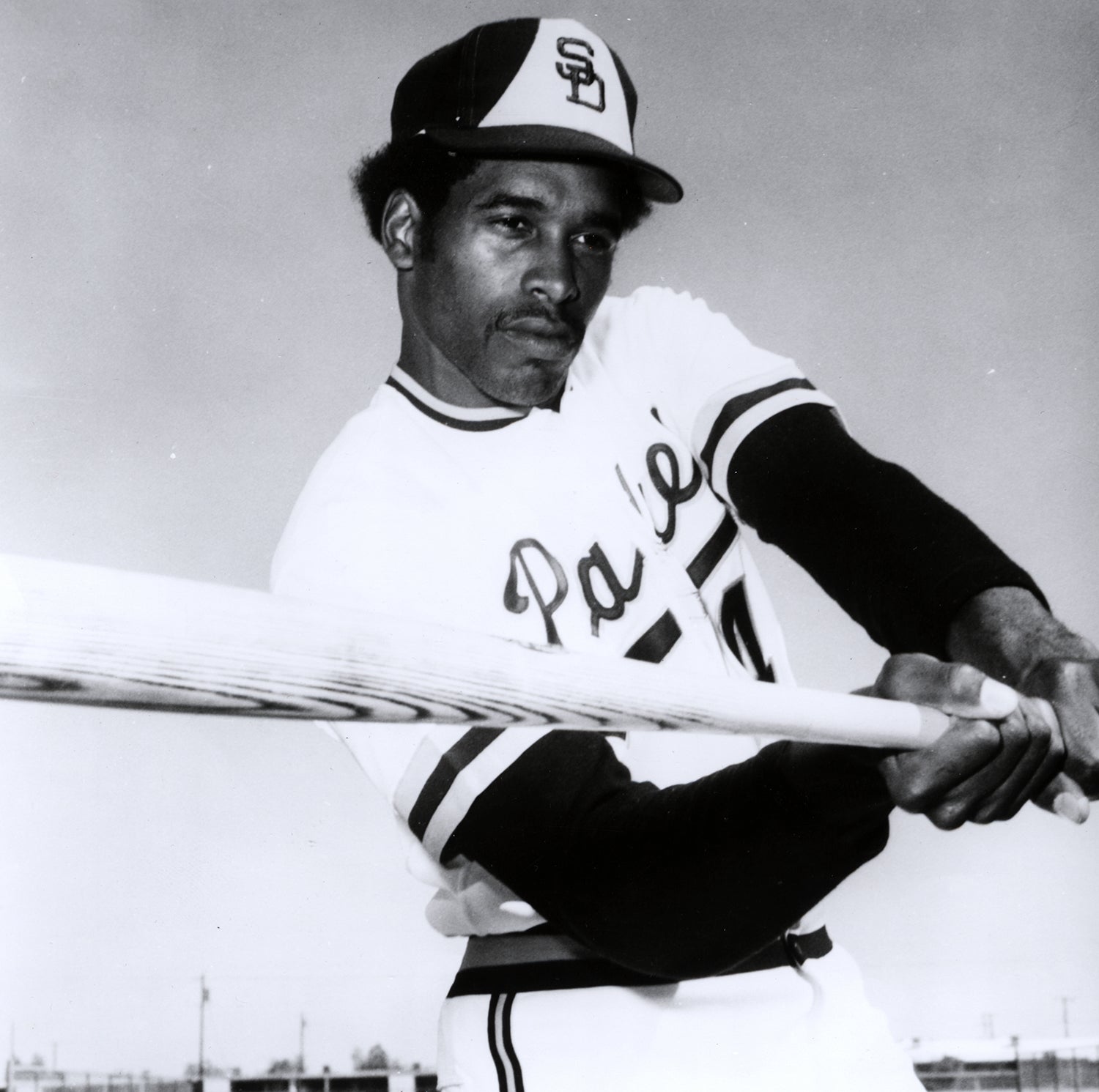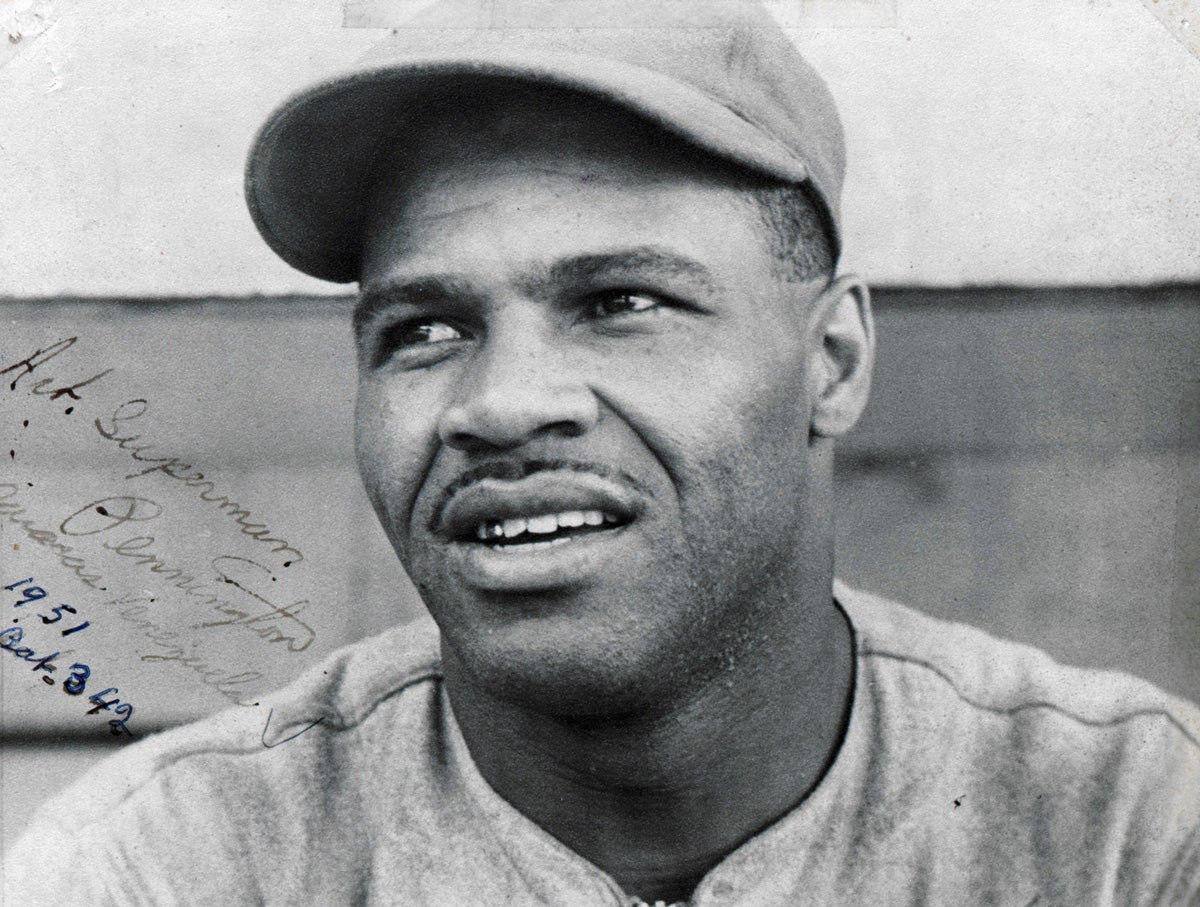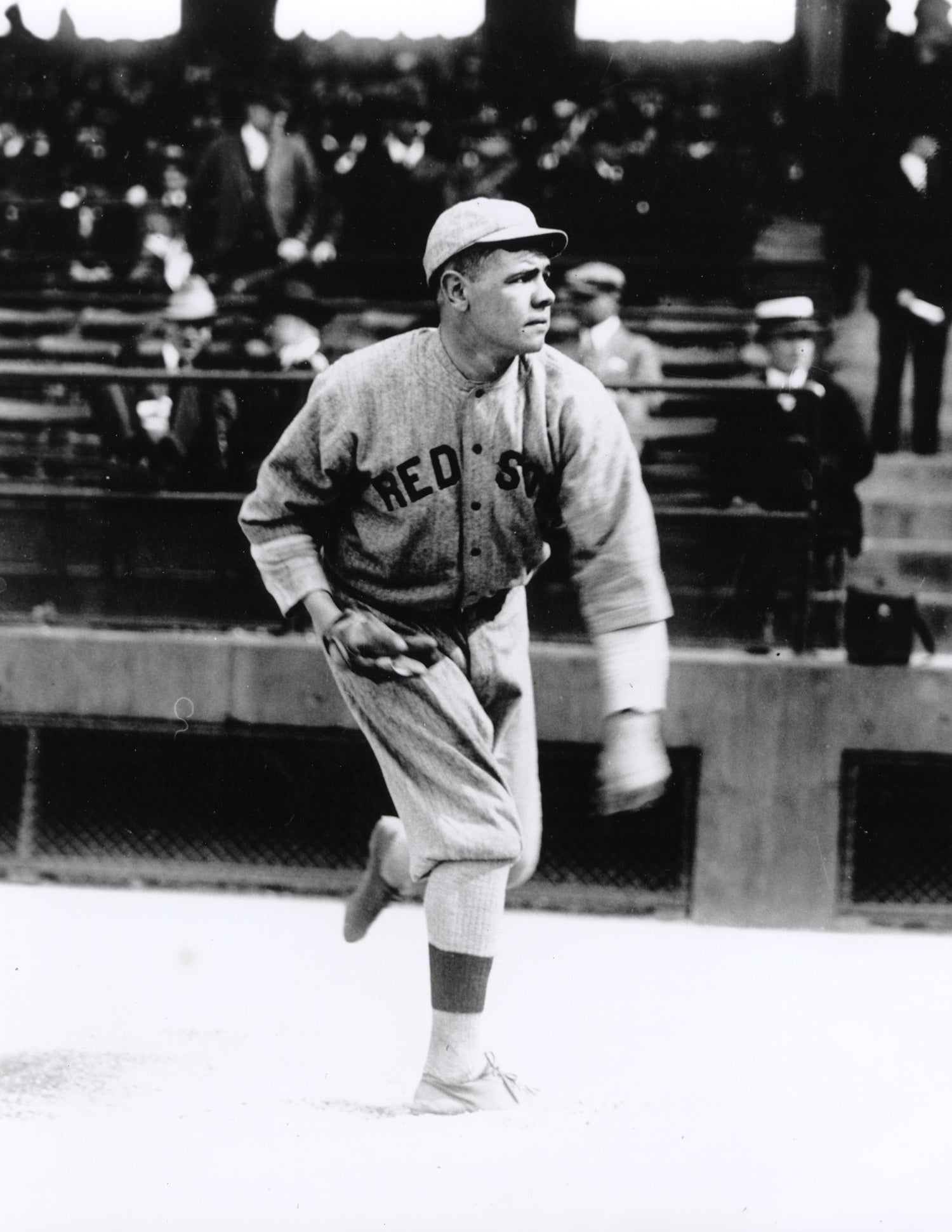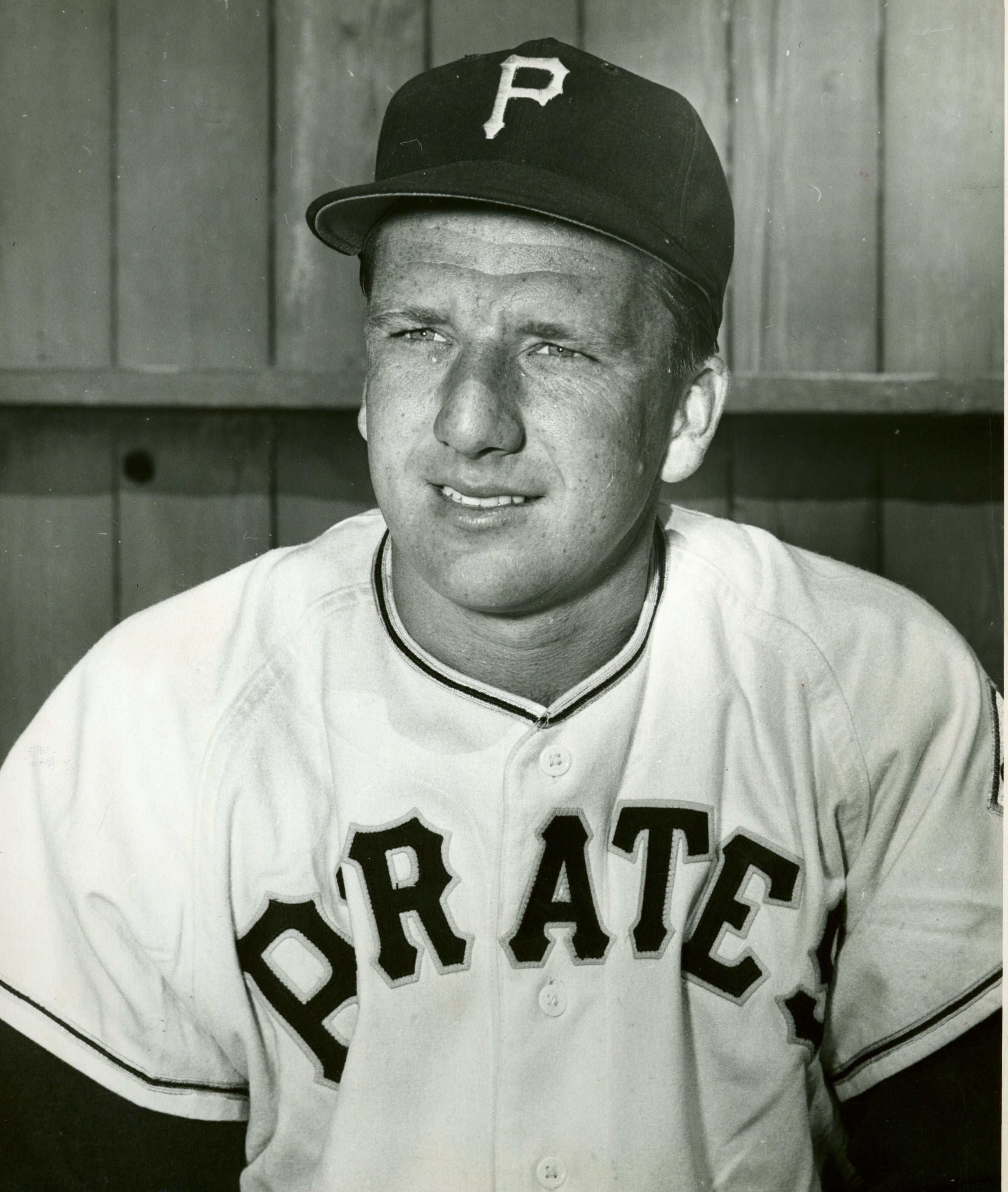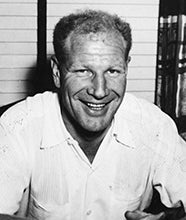- Home
- Our Stories
- Kiner cornered stars with Pirates
Kiner cornered stars with Pirates
In recent years, it has become fashionable for movie stars to take batting practice or spend a day of Spring Training with their favorite team. In the relaxed atmosphere of the first days of camp it can be a common scene, even if the stars seem a bit out of place on the diamond.
Yet, in the case of Bing Crosby, he had a good reason to be seen with Hall of Famer Ralph Kiner in this March 1950 photograph. (That’s Crosby wearing the hat and sporting a pipe; the man on the far right is Pirates GM Roy Hamey, while the other man is unknown.) Crosby wasn’t just a baseball fan, or a Pittsburgh Pirates fan. He was actually one of the minority owners of the Pirates’ franchise. So when he showed up on this day to the Pirates’ spring training site, at Perris Hill Park in San Bernardino, Calif., no one would have had reason to ask him to leave.
Baseball has actually featured a long tradition of Hollywood-types as owners. In perhaps the most notable example, Gene Autry, the famed “Singing Cowboy,” became the first majority owner of the Los Angeles Angels in 1961. Autry continued to own the Angels until his death in 1998.
Hall of Fame Membership
There is no simpler, and more essential, way to demonstrate your support than to sign on as a Museum Member.
In other cases, Hollywood celebrities have served as minority stockholders in teams. When Bill Veeck purchased the Cleveland Indians in 1946, his shareholders included legendary comedian Bob Hope. (Seventeen years later, Hope would appear on the cover of Sports Illustrated in full Indians regalia.) In 1977, the Seattle Mariners entered the American League as an expansion team; their roster of original owners included versatile entertainer Danny Kaye. In more recent years, the late Wayne Rogers, best known for his portrayal of Trapper John on M*A*S*H, owned a small percentage of the Oakland A’s.
So how is it that Harry Crosby, better known as Bing, came to own part of the Pirates? He was a close friend of Pirates majority owner John Galbreath, whom he came to know through their mutual interest in horse racing. That relationship led to Crosby purchasing shares in the team, beginning in 1947. Crosby did not sit idly by, but at times took on an active role. According to son Nathaniel, Bing played a role in recruiting high school pitching prospect Vernon Law, who would become a Pirates mainstay. Crosby also signed a prospect named Tom Mulcahy in 1956; Mulcahy would never pitch in the big leagues, but would become a longtime scout with the San Diego Padres.
In particular, Crosby became close with Kiner, the Pirates’ leading power hitter from 1946 to 1952. It was Crosby who set up a date between Kiner and a young actress named Elizabeth Taylor. At Crosby’s request, Kiner accompanied Taylor to a premiere for the Gregory Peck film, Twelve O’Clock High. As Kiner put it years later about Crosby’s request: “He didn’t have to ask twice!”
Crosby maintained his ownership interest in the Pirates into the mid-1960s. As part of his intriguing baseball legacy, he owned a kinescope recording of the televised broadcast of Game 7 of the 1960 World Series. That recording eventually made its way to the MLB Network, which aired the tape in 2010.
For that, we can thank Bing Crosby, baseball fan and owner.
Research assistance provided by Hall of Fame Senior Curator Tom Shieber
Bruce Markusen is the manager of digital and outreach learning at the National Baseball Hall of Fame




